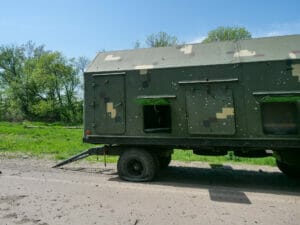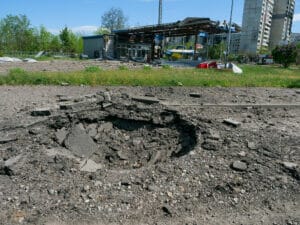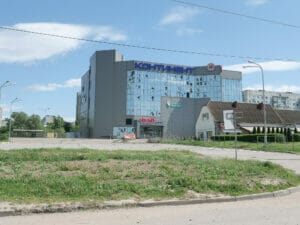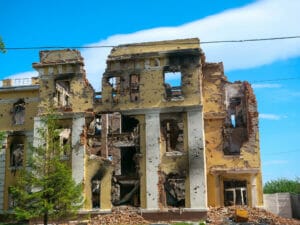Kharkiv: Victory on ruins
A mixture of petrol and gas smells hang in the air, and the flames are still feeding on one of the properties. On Thursday, May 12, it was four days since the Ukrainian army recaptured Tsyrkuny. Or what’s left of the Kharkiv suburb.
At the time of the visit, the Ukrainian counter-offensive is still ongoing. The army has already pushed the enemy out of the urban area. Kharkiv has not recorded any rocket hits for several days. According to Ukrainian soldiers, the black clouds of smoke on the horizon, which can be seen rising from the city center behind the hills, are evidence of this. They also attribute the rumble of artillery fire, which can still be clearly heard a few kilometers away, to the successful advances of their comrades.
From Tsyrkuny the front is much closer. Barely eight kilometres to the north, about three to the east, according to Liveuamap data. There are hardly any people on the streets here. We are only allowed to take photos and videos from the car, the risk of mines lying between the rubble or on the side of the road is too big. But the extent of the destruction can also be documented from the journey. The Church of St. Nicholas is one of the few buildings that appears to have survived the fighting well.
Further back in the city, in the Saltivka district, dozens of people still live in a subway station. On mattresses and wrapped in sleeping bags and blankets, they occupy the steps and the anteroom. In the aisle in front, volunteers distribute meals. It’s only a few dozen steps from the warm sunshine to a completely different dark world.
The atmosphere here is still one of fear and insecurity. Will the fights come back? Traces of soot even on the upper floors of the surrounding high-rise buildings, shattered window panes and commercial areas covered down to the metal scaffolding bear witness to the violence of the previous few days in Kharkiv.
A similar trail of devastation stretches along the E105 trunk road, along which Russian tanks are said to have rolled almost as far as Gorky Park in Kharkiv; almost 4000 kilometers long, it once covered the route from Yalta in Crimea, annexed by Russia, to Kirkenses in Norway. On the way there, there are still shrapnels from a rocket by the wayside. The adjacent School of Physics and Technology (Phystech) of the Kharkiv National V.N. Karasin University is only a shadow of its former self. What a rocket hit on a multi-story house looks like can be seen in a nearby residential area.
Meanwhile, not every destroyed house can be attributed to Russian shelling, as On the Ground learns on site in Kharkiv. But they are due to the invasion of troops: The ruins of a school building were caused by the Ukrainian army itself. 17 Russian soldiers had entrenched themselves here, but only four accepted the offer to surrender. “So a tank came and shot at every window,” it is said. War is merciless.
Vorgeschlagene Beiträge

Why foreign farmers are coming back to Ukraine

Tatiana Ovays: IDP from Sievierodonetsk starts over in Vinnytsia

From Afghanistan and Ukraine: A family flees for the second time
[mc4wp_form id=239488]


































Leave a Reply
You must be logged in to post a comment.